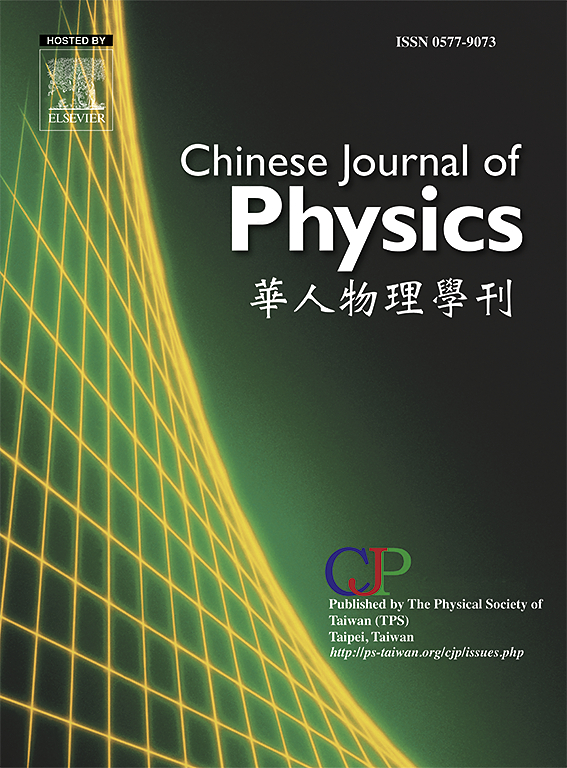Comments on the paper “The structural, electronic and magnetic properties of Fe3ZnC anti-perovskite”
IF 4.6
2区 物理与天体物理
Q1 PHYSICS, MULTIDISCIPLINARY
引用次数: 0
Abstract
We revisit the magnetic phase transition in the spin-5/2 Blume–Capel model, proposed to describe the magnetic properties of FeZnC in the recently published paper ”The structural, electronic and magnetic properties of FeZnC anti-perovskite” by Hajjami et al., using the Monte Carlo method combined with finite-size scaling analysis. Our results verify that the magnetic phase transition is continuous and belongs to the three-dimensional Ising universality class. The critical temperature is determined to be K, which is close to a mean-field theory estimate but significantly lower than the value reported by Hajjami et al., raising questions about the validity of their computational analysis. Moreover, the discrepancy in critical temperature between our results and experimental observations suggests that the proposed spin model or parameter set may require reevaluation to properly describe the magnetic properties of FeZnC.

对“Fe3ZnC反钙钛矿的结构、电子和磁性能”一文的评论
Hajjami等人在最近发表的论文《the structure, electronic and magnetic properties of Fe3ZnC anti-钙钛矿》中提出了描述Fe3ZnC磁性能的自旋5/2 J1−J2 Blume-Capel模型,我们使用蒙特卡罗方法结合有限尺寸缩放分析,重新审视了该模型中的磁相变。我们的结果验证了磁相变是连续的,属于三维伊辛普适类。确定的临界温度为Tc=23.63(1) K,接近平均场理论估计,但明显低于Hajjami等人报道的值,对其计算分析的有效性提出质疑。此外,我们的结果与实验观察之间的临界温度差异表明,所提出的自旋模型或参数集可能需要重新评估,以正确地描述Fe3ZnC的磁性能。
本文章由计算机程序翻译,如有差异,请以英文原文为准。
求助全文
约1分钟内获得全文
求助全文
来源期刊

Chinese Journal of Physics
物理-物理:综合
CiteScore
8.50
自引率
10.00%
发文量
361
审稿时长
44 days
期刊介绍:
The Chinese Journal of Physics publishes important advances in various branches in physics, including statistical and biophysical physics, condensed matter physics, atomic/molecular physics, optics, particle physics and nuclear physics.
The editors welcome manuscripts on:
-General Physics: Statistical and Quantum Mechanics, etc.-
Gravitation and Astrophysics-
Elementary Particles and Fields-
Nuclear Physics-
Atomic, Molecular, and Optical Physics-
Quantum Information and Quantum Computation-
Fluid Dynamics, Nonlinear Dynamics, Chaos, and Complex Networks-
Plasma and Beam Physics-
Condensed Matter: Structure, etc.-
Condensed Matter: Electronic Properties, etc.-
Polymer, Soft Matter, Biological, and Interdisciplinary Physics.
CJP publishes regular research papers, feature articles and review papers.
 求助内容:
求助内容: 应助结果提醒方式:
应助结果提醒方式:


